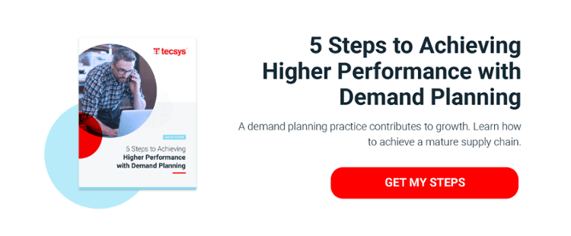Predictability Is the Key to Supply Chain Sustainability (Part 2 of 2)

Please enjoy this republication of a Supply & Demand Chain Executive article.
You can access the first post in this two-part series here: part 1.
The Next Link in the Chain
Making predictions involving your supply chain can occasionally feel like divining, but it becomes more of a science with each passing day. To improve predictability in your own supply chain, take these three steps:
-
- Map the known future. The onus is on supply chain strategists to find areas where their companies can mitigate risk. Could areas of an organization become outdated or inflexible at some point? Replace them with agile and predictable ecosystems that can quickly respond to internal and external forces. To accomplish this goal, supply chain strategists must take the long view.
It is impossible to tell when a disruption will arise that your organization will need to embrace. It could be new technology or a new feature that elevates the industry standard, but it will be essential to remain competitive. If you lack the budget to adjust in the current year, your reaction time will be delayed by months while competitors rush ahead.
Change is the only constant, so set your organization up in a way that gives it flexible access to future features. Focus on what you do know and plan accordingly, whether it’s as specific as Black Friday and Christmas or as broad as hurricane season for the Atlantic Coast. Predictability allows you to adapt quickly and capitalize on innovations that can catapult your company to the top.
-
- Control cash flow. Operationalize as many capital expenditures as possible to regulate cash flow. This traditionally means the amortization of capital expenditures, but that puts leaders in a corner by requiring ongoing amortization for each future cycle.
Consider the decision between buying or leasing a car. Most people assume that buying the car is the more attractive option, but that might not be the case. Thanks to rapid innovations in electric vehicles and vast improvements in battery technology, your vehicle will be out of date long before the odometer hits 500,000 miles. Leasing gives you access to the latest features in safety, comfort, and efficiency. In an environment of accelerated change, leasing a vehicle allows you to stay ahead of the innovation curve.
We recently worked with an organization that struggled with internal processes. Although we determined that an upgrade was the best course of action, the company had to wait until its next budget cycle to consider the investment. The same problem plagued Target’s attempt to expand into Canada; the move failed because of supply chain inefficiencies that would have taken the company years to address. A tight grip on cash flow makes it easier to handle surprises or inconsistencies.
-
- Plan for the long term. Too many organizations rely on Band-Aids without solving underlying issues. Supply chains must be able to absorb ebbs and flows, and predictability is like a shock absorber that allows your company to scale and adjust accordingly.
Back when cellphone users paid by the minute, some companies would allow their customers to roll over unused minutes from one month to the next. When you have an accurate idea of baseline patterns in your supply chain, you can absorb any discrepancies that arise. As your supply chain becomes more predictable, your capacity for absorption increases.
It would be easy for supply chain strategists to spend their time putting out fires, but that approach makes planning more than a few months ahead impossible. Eliminating these problems for good takes a future-focused mindset.
Manufacturing organizations will always contend with supply chain surprises, but the pursuit of predictability remains vitally important. Disruptions and delays have no place in the modern supply chain, and the companies that can effectively minimize them will enjoy major advantages over their competitors. Strive for predictability and remain focused on the factors within your control, and you’ll be ready for whatever life throws your way.



